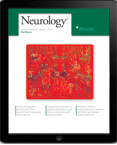Neurology:心脏骤停后的脑电图与临床转归
2013-01-09 Neurology dxy geniusgodyu
心脏骤停后常常使用低温疗法进行脑保护,不少患者也会出现抽搐的表现。为了确定脑电图(EEG)分级评分的预后价值以及在心脏骤停后低温治疗(TH)和复温(NT)治疗中根据持续脑电图(cEEG)的发现治疗抽搐的临床转归,美国梅奥诊所神经科的Amy Z.Crepeau博士等人进行了一项研究,研究结果在线发表在2013年1月2日的Neurology杂志上。研究发现在TH和NT中脑电图严重程度评级为1级和3
心脏骤停后常常使用低温疗法进行脑保护,不少患者也会出现抽搐的表现。为了确定脑电图(EEG)分级评分的预后价值以及在心脏骤停后低温治疗(TH)和复温(NT)治疗中根据持续脑电图(cEEG)的发现治疗抽搐的临床转归,美国梅奥诊所神经科的Amy Z.Crepeau博士等人进行了一项研究,研究结果在线发表在2013年1月2日的Neurology杂志上。研究发现在TH和NT中脑电图严重程度评级为1级和3级与临床转归相关。治疗抽搐并不能改善临床转归。
该研究为队列研究。研究为期2年,回顾性复习根据试验设计进行心脏骤停后TH治疗的所有患者的电子病历和cEEG。cEEG在进行TH后开始,转为NT后停止。脑电图根据科室研发的脑电图严重程度分级量表分为1-3级(3级为最严重),由两位不知道临床转归的作者进行操作。临床转归使用脑表现分类量表进行测定:1-2级认为是“好转”,3-5级为“恶化”。
研究结果发现:共纳入54位患者,51位在NT全程中持续进行cEEG。19位患者死亡。在TH和NT治疗过程中两种脑电图严重程度(1级为好,3级为差)均与临床结局有统计学上相关性。其他与差的临床转归相关的脑电图特征包括:抽搐、无反应性背景和癫痫样发放。监测过程中脑电图的改变在统计学上与临床结局没有相关。5位患者出现了抽粗,均发生在3级脑电图背景的患者,他们的临床转归都很差。
该研究发现:在TH和NT中脑电图严重程度评级为1级和3级与临床转归相关。该队列研究显示治疗抽搐并不能改善临床转归。

Continuous EEG in therapeutic hypothermia after cardiac arrest: Prognostic and clinical value
Objectives: To determine the prognostic value of an EEG grading scale and clinical outcome of treated seizures detected with continuous EEG (cEEG) during therapeutic hypothermia (TH) and rewarming post cardiac arrest (CA).
Methods: Our cohort study retrospectively reviewed the electronic medical records and cEEGs of all patients undergoing TH after CA under protocol over 2 years. cEEG was initiated during TH and continued until restoration of normothermia (NT). EEGs were graded 1–3 (3 = most severe) using a departmentally developed EEG severity grading scale by 2 authors blinded to clinical outcome. Outcome was measured using the Cerebral Performance Category scale; grades 1–2 were considered a “good” outcome, 3–5 “poor.”
Results: Fifty-four patients were included; 51 remained on cEEG through NT. Nineteen died. EEG severity grading during both TH and NT statistically correlated with outcome (grade 1 = good, grade 3 = poor). Other EEG features correlating with poor outcome included seizures, nonreactive background, and epileptiform discharges. Changes in EEG grade during monitoring did not statistically correlate with outcome. Five patients had seizures; all occurred in patients with grade 3 EEG backgrounds and all had a poor outcome.
Conclusion: Grades 1 and 3 on our EEG severity grading scale during TH and NT correlated with outcome. Treating seizures did not improve outcome in our cohort.
本网站所有内容来源注明为“梅斯医学”或“MedSci原创”的文字、图片和音视频资料,版权均属于梅斯医学所有。非经授权,任何媒体、网站或个人不得转载,授权转载时须注明来源为“梅斯医学”。其它来源的文章系转载文章,或“梅斯号”自媒体发布的文章,仅系出于传递更多信息之目的,本站仅负责审核内容合规,其内容不代表本站立场,本站不负责内容的准确性和版权。如果存在侵权、或不希望被转载的媒体或个人可与我们联系,我们将立即进行删除处理。
在此留言








#Neurol#
48
#临床转归#
83